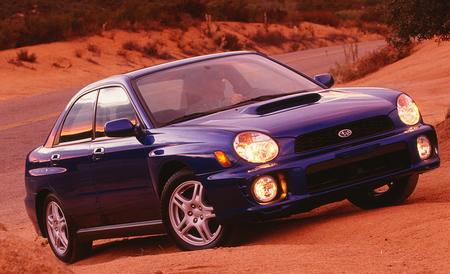The WRX’s chassis felt tight, responsive, and solid. Subaru says that a host of structural improvements netted a whopping 148 percent improvement in torsional body rigidity over the last Impreza, which now looks like a bit of a wet noodle.
We didn’t get enough seat time to make a firm judgment on the WRX’s handling, but our initial impression was one of surprising balance. On a dust-covered asphalt autocross course, we felt little of the traditional understeering plow. Rather, we could easily dial in a bit of oversteer to get the car to rotate. If, in fact, our early impressions hold, the WRX’s willingness to rotate would put it among a cherished few road cars with active rear ends.
The brakes left a similarly warm, fuzzy feeling. Up front, twin-piston sliding calipers grab 11.4-inch vented rotors, and the rear uses 10.3-inch-diameter solid rotors and single-piston calipers. Anti-lock brakes are standard, and there’s little fade.
Two body styles are available in WRX guise: a four-door sedan and a five-door wagon. Both bodies have the same mechanical stuff, but the sedan comes with more aggressive-looking blistered fenders.
Subaru wouldn’t talk pricing at the early introduction, but we think a base Impreza WRX, with standard side airbags, wonderfully comfortable and supportive front seats, an in-dash CD changer, and the usual power stuff we’re all used to, will cost about $26,000.
If we’re right, the WRX will be about $6000 more than the 2.5RS yet will still be less expensive than the slower BMW 325ix and Audi A4 1.8T Quattro.


Leave a Reply